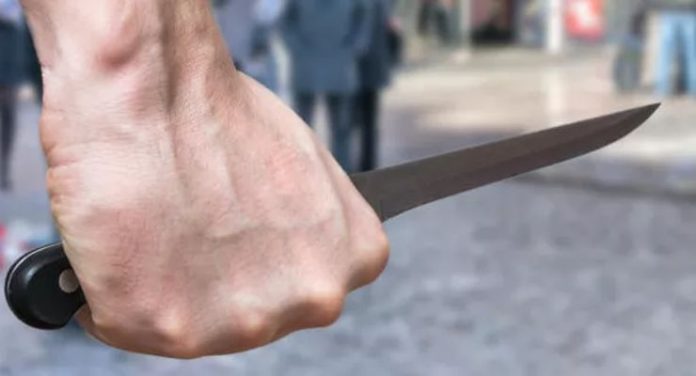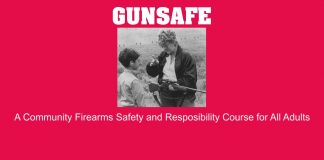Misconceptions About Martial Arts and Self-Defense
There is a stark difference between the perceived effectiveness of martial arts/fight sports, in handling violent encounters and the reality of street violence. The belief that trained fighters can easily defend against violent attackers is often misleading, influenced by Hollywood portrayals rather than real-life scenarios.
Rising Crime Rates in America and Europe
In recent years, both America and Europe have experienced a sharp increase in violent crimes, including manslaughter, rape, assaults, and human trafficking. This surge is attributed in part to immigration and a lack of effective law enforcement, contrasting the government’s “Potemkin Village” claims of declining crime rates. However the FBI says otherwise, they recently released a report stating individuals in the U.S. now have a 1 out of 396 chance of being violently attacked.
The Shift in Government Priorities
In both America and Europe, there is a worrying trend where government policies focus more on regulating speech and prioritizing the rights of criminals rather than ensuring the safety of the public. This shift raises concerns about the adequacy of self-defense laws.
Impunity of Criminals
Criminals today often feel emboldened due to leniencies in the legal system, such as no cash bail and catch-and release policies for illegal immigrants. This lack of accountability has contributed to a culture where violent crime can proliferate without serious consequences.
Unpredictability of Street Violence
Street attacks are increasingly random and spontaneous and can escalate from minor incidents to severe violence instantaneously. This unpredictability heightens the danger for individuals, as even a seemingly trivial interaction may lead to a life-threatening situation.
Self-Defense Challenges
Individuals who attempt to defend themselves in violent situations may face legal repercussions, as many jurisdictions prioritize the rights of offenders over the protection of victims. This creates a significant challenge for citizens trying to safeguard themselves.
____________________________________________________
Survival-Based Martial Training
Limitations of Traditional Martial Arts / Fight Sports
Top fighters often excel in unarmed competitions but struggle against armed attackers due to their training focus, which lacks real-world application in confrontations involving weapons.
Combatives: Military Origins
Combatives, developed from U.S. military close-quarter combat in the early 20th century, emphasizing simple, effective techniques that are easy to learn / apply in dangerous situations. Historically, combatives training emphasized overly aggressive techniques, which deterred many potential students from enrolling. In recent years, combatives has evolved more into the more encompassing nature of reality-based training.
RBT (Reality-Based Training) Evolution
Emerging in the early 2000s, reality-based training focuses on practical defense strategies, that anyone can use to deal with a wide spectrum of situations from the smallest of daily intrusions right up to dealing with and winning a dangerous physical attack.
Jim Wagner pioneered many major concepts being used by the RBT community today.
____________________________________________________
Evolution of Combatives Towards Reality-Based Training
Mindset and Psychological Preparedness
The modern approach to reality-based training places significant focus on the mindset of individuals, emphasizing the importance of psychological and emotional fitness in self-defense situations. This highlights – that effective self-defense is not only about physical skills but also about mental / psychological readiness.
Prevention Through Awareness
According to recent perspectives in reality-based defense, a majority of street violence, approximately 90%, can be avoided through proper situational and environmental awareness. By honing these skills, individuals can reduce their chances of encountering violence.
Control of the Startle Reflex
Learning to manage the startle reflex is crucial in high-stress situations. This training allows individuals to respond more effectively when confronted with unexpected violence, fostering a sense of control and enhancing their capacity to act decisively.
Self-Reliance and Weapon Carrying
A pivotal element in the study of reality-based training is the notion of self-reliance. It stresses that individuals should be prepared to defend themselves without expecting external assistance. Additionally, it is essential to carry weapons lawfully suited to one’s jurisdiction, reinforcing the importance of personal safety and preparedness.
____________________________________________________
Understanding the Demographics of Self-Defense Seekers
Age Range of Participants
Individuals interested in self-defense training typically fall within the age bracket of mid-20s to late 50s, indicating a wide range of life experiences and motivations. Many individuals seeking self-defense training have either personally experienced violence or have been witnesses, which can drive their interest in gaining protection skills.
Diverse Skill Levels
The demographic can be categorized into three distinct groups: those with no prior training, those with previous training and current practitioners of martial arts or sport fighting, reflecting varying levels of experience and motivation. A significant factor for most of this demographic is a severe lack of time due to professional commitments, schooling, and family obligations, which affects their ability to engage in self-defense training.
____________________________________________________
Essential Skills in Reality-Based Training
Firearms Training
Firearms serve as powerful tools for personal defense, but their effectiveness is contingent on the user’s ability to anticipate an attack and the opportunity to access the weapon in time.
Edged Weapons
Edged weapons, such as knives offer significant tactical benefits including ease of concealment, rapid deployment, minimal training requirements, and silent operation. Wounds inflicted by edged weapons can be more damaging to nonvital areas compared to firearms.
Impact Weapons
Impact weapons like baseball bats, pipes and hammers can cause serious harm or even death, training to defend against them is vital due to their capacity to inflict debilitating injuries.
Unarmed Skills – Prep for Weapon Access
Beyond defending against less than lethal attacks, the primary goal of developing unarmed skills is to create an opportunity to access a weapon when ambushed. This aspect emphasizes the need for quick reflexes and tactical awareness in critical moments.
____________________________________________________
Practical Approaches to Reality-Based Defense
Learning Fundamentals Efficiently
Reality-Based Defense can be learned quickly, often through targeted lessons that fit into busy schedules, allowing effective preparation without extensive time commitments.
Modular Training Structure
Training is often broken down into small, manageable modules, enabling learners to acquire specific self-defense skills in concise sessions rather than lengthy courses.
Integration with Martial Arts
Individuals with backgrounds in martial arts and sport fighting can easily enhance their skillset by integrating specialized modules such as awareness training, handling the startle response and weapons training.
____________________________________________________
Understanding Self-Defense Laws to Protect Your Freedom
Consequences of Misjudged Force
Many individuals have found themselves incarcerated due to a misunderstanding of self-defense laws, often believing their right to use deadly force extends to minor provocations. This mindset can lead to life-altering legal repercussions that they fail to anticipate.
The Importance of Avoidance
Avoidance is emphasized as the primary strategy for personal safety. By retreating from potential conflicts, individuals can prevent dangerous situations from escalating and reduce their risk of legal troubles associated with self-defense claims.
The Four Critical Rules of Self-defense
Understanding the four rules of self-defense is essential. These include: Avoidance, which emphasizes that one should never initiate contact; Innocence, which asserts that only the initial victim can claim self-defense; Imminence, requiring that the threat be immediate; and Proportionality, where the level of force must match the threat level faced. (Source: lawofselfdefense.com)
*To read more about reality-based training see my article here: Martial Arts of the World – An Encyclopedia of History and Innovation (Volume II – page 496) Thomas A. Green and Joseph R. Svinth, Editors
© 2024 Defense Science. All Rights Reserved.
____________________________________________________
*Coming Soon
Reality-Based training methodologies for novices, intermediates and advanced players.






